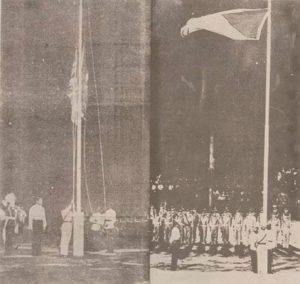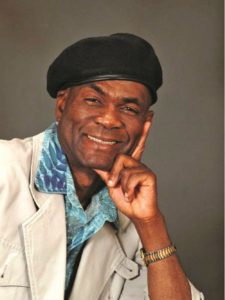By Horace Walcott

I was one of the pupil leaders selected by my school, Malgre Tout, to attend a rally at the Parade Ground in Georgetown in honour of Queen Elizabeth II. Her Majesty and Prince Phillip were visiting Guyana in February of 1966. I can recall standing a few yards from Her Majesty as she took the salutes of military and scout bands as they marched pass her. I was one of the youngest scouts in Guyana and, though pedantic and introverted, was attracted to the military.
There was a platoon of British troops stationed across the street where I lived at Versailles. Prior to Guyana’s independence, they relocated to Eve Leary in Georgetown. It must have been a few weeks after the Queen’s visit. Then there was Independence Day, a few days after my birthday. The Duke and Duchess of Kent were visiting Guyana and there was a celebration to honour the royals at the West Demerara Secondary School (WDSS) in Pouderoyen, the village adjacent to Versailles.
In addition to the royal couple attending the celebration, many important officials including Governor General Sir Richard Luyt and government ministers, were at WDSS. I remember attending the ceremony, but being there briefly. I was dressed in my neatly pressed scouts’ uniform: khaki short pants, scouts’ belt, a lanyard around my neck with a scarf having the colours of the Golden Arrow Head. My black leather shoes were polished and buffed. I was a scout with the Plantain Walk Boys Scout Troops.

Several weeks leading up to independence, we would be transported from the Vreed-en-Hoop Stelling by military trucks of the British Troops to Den Amstel, West Coast Demerara, and undergo joint training sessions with the Den Amstel troops. My scoutmaster and assistant scoutmaster were officers in the Volunteer Force, the precursor of the Guyana Defence Force. We learned all the flags of the British Empire and, at the end of our training, recited the Scout’s Honour Oath, in which we paid respect to God and the Queen.
On the eve of Guyana’s independence, we camped at Den Amstel in huts of the Public Works Department. The birth of the nation was ushered in by a camp fire, the lowering of the Union Jack accompanied by the British national anthem. Then, there was the raising of the Golden Arrow Head accompanied by cheers and the play of the Guyana national anthem.
As one flag was lowered and the other raised to full mast, both fluttering with grace displaying their full colours in the night sky illuminated by a large camp fire, crowds of spectators stood at attention and scouts saluted. Throughout the country, it seemed that the red, white and blue receded physically and spiritually and was replaced with red, yellow, black, white and green.
As a teen, I felt the people of Guyana had lost and gained. What was lost and gained? That question I answered myself, as I witnessed with fellow Guyanese our nation’s struggle for economic and spiritual freedom.
My stint in the Versailles Boys Brigade and Plantain Walk Scout Troops would pay off a decade later. As a Guyana scholar candidate, I was required to undergo ‘guerrilla warfare’ training in the Guyana jungles. Though in 1976 and 1977, as a budding yogi, I could have refused or objected to the military training.
I didn’t fall in love with the hinterland. However, my stint in Guyana’s jungles inspired me to specialise in zoological medicine. Several years ago, one of my teams of research students deciphered the physics of the blow pipe used by the indigenous people or ‘Red People’. Part of the research was done at Harvard University. Notably, the team has developed a novel amphibious tranquilising dart rifle.
Now residing in the U.S., I still wear berets in the winter to remind me of my scout days in Guyana, and floppy hats in the summer to remind me of my National Service stint at Papaya and Kimbia.
From 1996 to 1997, with family support, I completed post graduate studies in zoological medicine at the Royal Veterinary College and the London Zoo. For my thesis research, I conducted toxicological pathology studies in neuroendocrine disruption and biosonar in harbour porpoises in British waters.
For me, Guyana has always been a magical, mystical place tinged with danger.



